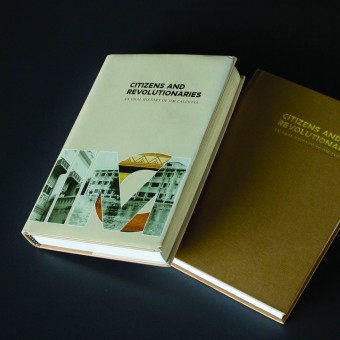DESIGN NAME:
An Oral History of IIM Calcutta
PRIMARY FUNCTION:
Book Design
INSPIRATION:
The narrative of the book was the first thing the designers looked at for determining the look-and-feel of the book. The 3 parts of the book were further divided into chapters that defined the overall structure. Since the history of the place is rooted in Calcutta, we looked early 20th century literature and publications by Tagore for inspiration which helped derive the colour palette. Typography is modern & functional to facilitate easy reading and quick comprehension of variety of information.
UNIQUE PROPERTIES / PROJECT DESCRIPTION:
The design takes into consideration that the book is divided into 3 parts, each having sub-parts. Each of the 3 parts and their sub-parts are treated differently as chapter openers. The challenge was to treat each type of content differently without creating too many varied styles and treatments. The concept was to create a book that is easy to read while paying minute attention to typographic details for the narrative.
OPERATION / FLOW / INTERACTION:
This book documents an Oral History of Indian Institute of Management, Calcutta, India. The entire history of 50 years of this premier institute has been divided in to 3 parts for easy access and comprehension of the timeline.
PROJECT DURATION AND LOCATION:
The project took 4 months to complete. Most of the writing was done while at IIM Calcutta, and the design was done at Kena Design studio in Bangalore.
|
PRODUCTION / REALIZATION TECHNOLOGY:
The book is printed in offset press. The cover is hard-case and binding is done with section sewing. The Dust Jacket is with French Fold.
SPECIFICATIONS / TECHNICAL PROPERTIES:
Closed Book Size: 16 x 23 cms
TAGS:
-
RESEARCH ABSTRACT:
Citizens and Revolutionaries: An Oral History of IIM Calcutta is a commemorative volume that presents a biography of IIM Calcutta. It began as an archival project commissioned by the institute to record its history and evolution. The research took into account oral histories of individuals who played key role in founding/shaping the institute. Our research also took us to USA as we connected with several former MIT professors who had visited IIM Calcutta in the 1960s. When we began our research we discovered that despite its rich and varied existence, the institute had no archival repository that recorded its unique journey. Thus we began our research and enquiry by collecting documents and photographs and other historical material that were available at the Ford Foundation archives in New York and at MIT archives in Cambridge, Massachusetts.
CHALLENGE:
This is a book that traces the evolution of an institution and as a result the content maps the institution's journey from 1961 to present. This meant that our design had to support a wide variety of content from archival images, 50 year old letters and documents, archival editorials, to present day images of new campus buildings and events. Subtle but significant typographic elements communicate variety in information and evolution of changing times.
ADDED DATE:
2017-08-15 13:05:54
TEAM MEMBERS (2) :
Conceptualisation and Art Direction: Kumkum Nadig and Design: Gina Odathuparambil
IMAGE CREDITS:
All Images by Kena Design
|









